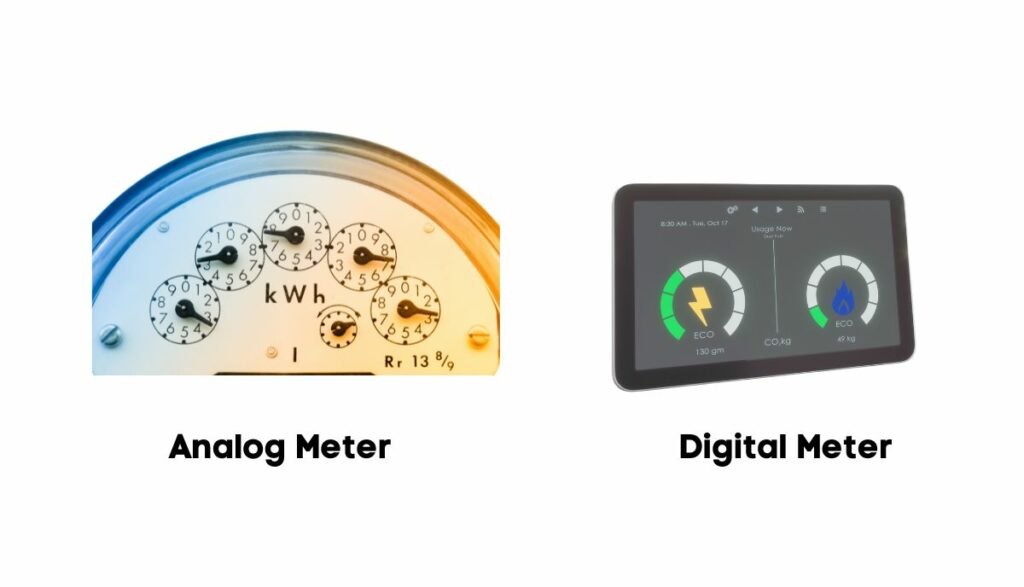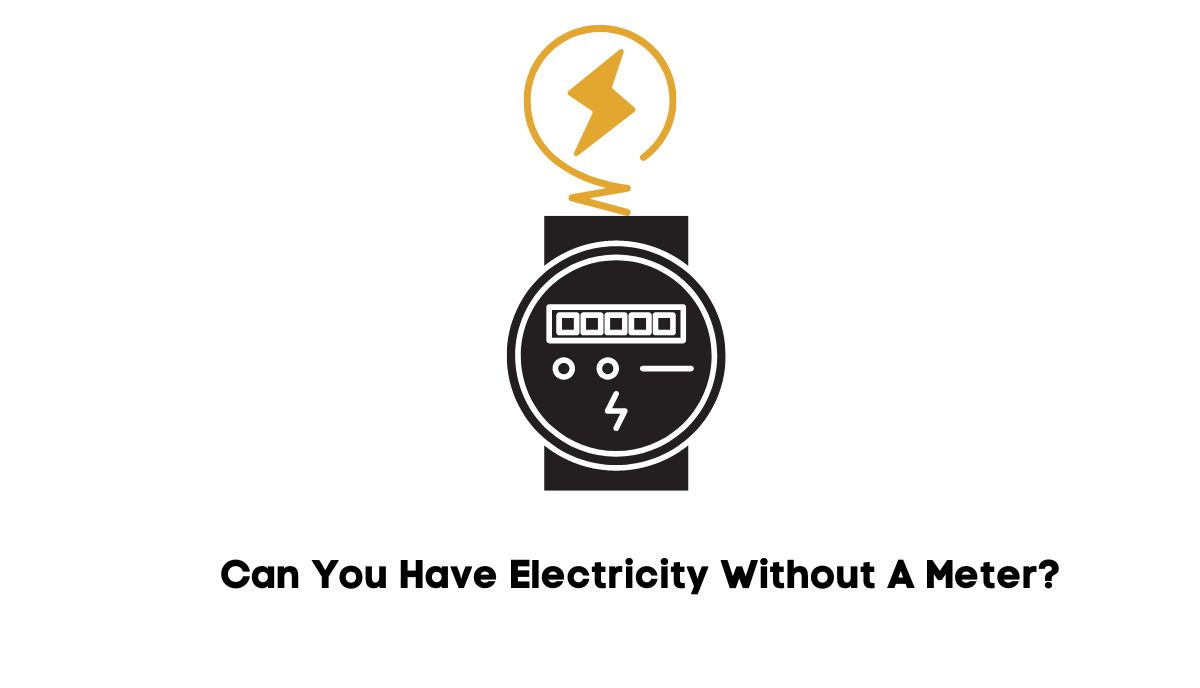On the one hand, the electric meter does not make energy. You don’t need it to move electricity from the grid to your home; if you removed it, the current would continue to flow. Many BTM systems funnel power directly into homes and appliances without transitioning through electric meters.
On the other hand, most consumers use front-of-the-meter power that originates from the grid. Energy companies create and maintain the grid. They won’t connect your home to the grid without installing a meter.
If they did, you would use their power for free because they have no means of tracking your energy consumption. As such, they will insist on installing an electric meter before allowing you access to the grid. In that regard, you can argue that a homeowner cannot get electricity without a meter unless they configure a BTM system.
To understand a meter’s relationship with your power supply, you should keep the following in mind:
What Does An Electric Meter Do?
Meters are exactly what their name suggests. They track your electrical consumption. Energy companies use their readings to bill you. Without a meter, you cannot measure the amount of power you use.
But as you can see, the electric meter’s primary function is unrelated to your home’s power supply. Technically, you can run a line from the grid to your house without going through the meter.
But why would a utility company permit this? Connecting your house to the grid without a meter allows you to consume their electricity for free, which doesn’t benefit them. Therefore, a utility provider won’t allow you to access their power unless they install a meter. In that regard, the electric meter and your home’s power supply are intimately intertwined.
Types Of Electric Meters

Electric meters are wide-ranging. Analog meters use dials to measure and represent your energy consumption. Digital meters have a screen that displays the readings. Netatmo has highlighted a type called the ‘Variable Rate Meter,’ which pulls the current during off-peak times.
Once again, this shows that electric meters have a direct association with the power supply. Prepayment meters prove as much because they limit your access to the grid depending on the credits you’ve loaded.
Smart meters are the best of the bunch. The Public Utility Commission of Texas loves them because they alert the utility provider when a power outage occurs. This allows the company’s personnel to respond quickly.
The energy company can resolve some outages remotely by sending sophisticated instructions to the smart meter. They can also deprive you of power using similar methods.
Understanding BTM Systems
BTM stands for ‘Behind The Meter.’ The United States Department Of Energy has a picture that explains this concept. BTM systems are the opposite of FTM (Front of the Meter) systems. With FTM systems, the power must flow through the electric meter to reach your home.
Front-of-the-Meter power can originate from the grid or large-scale energy storage facilities. If you have an FTM system, you can’t get electricity without a meter. BTM systems send the current directly to the target without transitioning through a meter. They include the following:
- On-site energy solutions produce electricity from behind the meter. They include solar panels and wind turbines. Some people use on-site energy generation to send electricity to the grid. This reduces their utility bills even though the household’s energy consumption habits remain unchanged.
- You can store energy in batteries to meet your home’s electrical requirements. The electric meter doesn’t play a role here.
- Some organizations create smaller versions of a power grid. This so-called microgrid exists behind the meter. It bypasses the grid entirely.
If you have an FTM system, you can’t get electricity without a meter. But if your power comes from a BTM system, the electric meter doesn’t matter.
Can Electric Meters Fail?
Electric meters rarely fail. First of all, the devices belong to the utility company. Laypeople are prohibited from tampering with them. Once the electrician installs the electric meter, no one will touch it until he returns to take readings a few weeks later.
If you have a smart meter, manual readings don’t matter. The meter will talk directly to the utility firm, which means it can exist peacefully for 15 to 20 years without external interference. However, it will eventually fail. If you’re unlucky, extreme conditions may accelerate the rate of wear and tear.
And once the meter dies, you may observe a disruption in your power supply. Citizens Advice has noted a similar issue. When a prepayment meter goes blank or displays an error message, it will most likely disrupt the property’s power supply.
The meter doesn’t generate electricity. But the current passes through the device. Therefore, a fault in the meter can interrupt the power supply.
Bypassing The Electric Meter
You can bypass an electric meter. The methods you use will depend on the type of meter. For instance, people expect magnets to disrupt these devices, but that is only true for analog meters with rotating disks.
Smart meters won’t respond to this tactic. Instead, you must hack them. Smart meters have weaknesses that skilled hackers can utilize. The goal is to fake the data the meter transmits to the utility company.
As you can see, bypassing the meter involves disrupting its functions as opposed to removing it entirely. The objective is to prevent the meter from recording your energy consumption. This will only affect the power supply if you damage the meter.
It is worth noting that such tactics are illegal. They are a form of theft because they allow laypeople to use electricity without paying for it. They also endanger homeowners by introducing fire and electrocution hazards.
Have you seen anyone tampering with the meter? Have you noticed magnets and other foreign objects on the device? Call the utility company before it’s too late. Otherwise, they will blame and penalize you.

